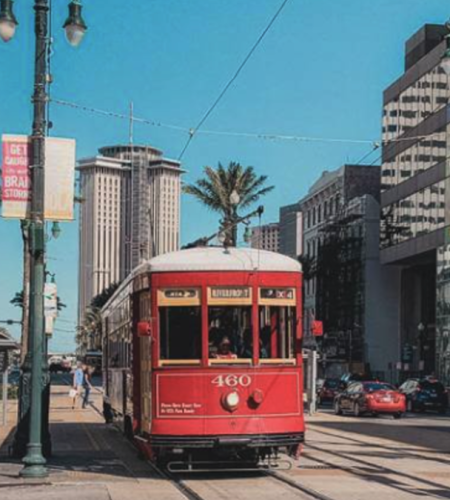In the heart of the Bayou State, where vibrant culture meets unpredictable weather, securing reliable car insurance is essential for every driver. Louisiana’s roads, from the bustling streets of Baton Rouge to the scenic drives along the Mississippi River, demand protection against accidents, theft, and natural disasters like hurricanes. However, with some of the highest premiums in the nation, finding cost-effective coverage can feel challenging. This guide explores key aspects of auto insurance in Louisiana, offering insights into requirements, influencing factors, and practical strategies to help you save while staying protected.
Understanding Louisiana’s Minimum Car Insurance Requirements
Louisiana mandates specific liability coverage to ensure financial responsibility on the road. Every vehicle must carry at least 15/30/25 limits, which break down to $15,000 for bodily injury to one person, $30,000 for bodily injury per accident, and $25,000 for property damage. This “no-fault” state approach means drivers are responsible for their own injuries, but liability covers damages you cause to others. While these minimums meet legal standards, they may not suffice for comprehensive protection, especially in high-risk areas prone to flooding or severe storms associated with the Gulf Coast.
Proof of insurance is non-negotiable-electronic or paper forms must be carried at all times, and failure to provide it can result in fines or license suspension. Entities like the Louisiana Department of Motor Vehicles enforce these rules strictly, tying into broader road safety initiatives across the state.
Why Car Insurance Rates Are Higher in Louisiana
On average, Louisiana drivers pay around $3,860 annually for full coverage, making it one of the most expensive states for auto policies. This figure surpasses the national average by a significant margin, influenced by regional challenges. For minimum coverage, expect about $1,188 per year, but costs can vary based on location and personal factors.
Several elements contribute to these elevated rates. The state’s judicial system, known for higher litigation expenses, often leads to increased claims payouts. Additionally, Louisiana grapples with a high number of uninsured motorists-estimated at over 10%-which shifts costs onto insured drivers through higher premiums. Natural disasters, such as those from Hurricane Ida in 2021, exacerbate risks, as insurers account for potential vehicle damage from floods and winds in areas like Lake Charles or the Atchafalaya Basin.
Urban density in cities like Shreveport and Lafayette also plays a role, with more traffic congestion leading to frequent accidents. These interconnected factors highlight why understanding local dynamics is crucial for managing expenses.
Key Factors Influencing Your Car Insurance Rates
Insurance premiums aren’t arbitrary; they’re shaped by a mix of personal and environmental variables. Your driving record is paramount-a clean history with no at-fault accidents or violations can lower rates significantly, while infractions might increase them by 20-50%. Vehicle specifics matter too: safety features like anti-lock brakes or airbags, along with the car’s make, model, and repair costs, directly impact quotes.
Demographics play a part-younger drivers under 25 or those with lower credit scores often face higher charges due to perceived risk. Location is another tied entity; residing in high-crime zip codes or flood-prone regions, such as those near the Red River, can elevate premiums. Even mileage driven annually affects calculations, as more time on the road increases exposure to hazards.
Tips for Securing Cheap Car Insurance in Louisiana
Despite the challenges, there are proven ways to reduce costs without sacrificing coverage. Start by comparing multiple quotes, as rates can differ widely based on your profile. Bundling auto with home or renters insurance often yields discounts of 10-25%. Opting for a higher deductible-say, from $500 to $1,000-can lower monthly payments, though it means more out-of-pocket in a claim.
Maintain a strong credit score and safe driving habits to qualify for good driver rewards. Usage-based programs that track mileage via apps might suit low-mileage commuters, potentially saving hundreds annually. Additionally, consider pay-per-mile options if you drive less than 10,000 miles a year, ideal for remote workers in suburban areas like Metairie. Exploring cheap car insurance Louisiana resources can provide tailored insights to these strategies.
Special Considerations for Car Insurance in New Orleans
New Orleans, with its iconic French Quarter and lively festivals like Mardi Gras, presents unique insurance hurdles. The city’s dense population and tourist traffic contribute to higher accident rates, pushing average full coverage to about $3,940 yearly-above the state norm. Flooding risks from the Mississippi River and Lake Pontchartrain necessitate comprehensive coverage for water damage, a common claim in this below-sea-level metropolis.
Theft and vandalism are more prevalent in urban hotspots, so adding anti-theft devices can help mitigate costs. Drivers here should prioritize policies that include roadside assistance, given frequent potholes and storm-related disruptions. For those seeking car insurance in New Orleans, focusing on local risk assessments ensures adequate protection amid the Big Easy’s vibrant yet volatile environment.
Final Thoughts on Protecting Your Drive
Affordable car insurance in Louisiana requires knowledge of state laws, awareness of regional risks, and proactive steps to optimize your policy. By staying informed about entities like liability limits and natural disaster impacts, you can make empowered decisions. Whether cruising the Cajun Country or navigating city streets, the right coverage safeguards your journey while keeping costs in check. Regularly review your policy to adapt to changes, ensuring long-term savings and peace of mind on Louisiana’s diverse roadways.

